Our fifth generation rotorcraft
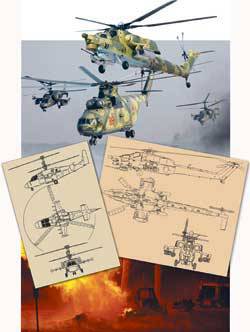 Russian helicopter builders start creating a new combat vehicle
Russian helicopter builders start creating a new combat vehicleIn the next few years, Russia may become the first country in the world to create a fifth-generation attack helicopter. True, for this, designers will have to solve a number of tasks, among which are the inconspicuousness and low noise of the new machine. It should be noted that similar projects exist in the United States, but there they do not receive government funding and have not gone beyond paper payments.
For the first time, the development of a fifth-generation helicopter at the end of 2008 was announced by Commander-in-Chief of the Russian Air Force, Colonel-General Alexander Zelin. However, the commander in chief did not disclose the details of the project; he only noted that the experimental design bureaus were actively working.
Still at the beginning
Since then, nothing was heard about the future car until May 2010 of the year, when the executive director of the holding company Helicopters of Russia Andrei Shibitov told about the creation of a new rotary-wing aircraft.
Judging by his words, the concept of a strike helicopter is being developed, but it is at the stage of pre-project research. That is, the project itself is actually not yet implemented. According to Shibitov, “the blowing of two aerodynamic schemes, coaxial and classical, has begun. The first results were obtained. ” Air blowing is performed by the Russian Mil and Kamov helicopters, which use the classical and coaxial schemes in their finished products, respectively.
In June 2010, the general designer and first deputy executive director of the Mil Design Bureau Alexey Samusenko told a little more about the new car. But from his statements it followed that, as such, pre-project studies on the theme of the fifth-generation helicopter had not yet begun. Russian specialists are engaged in research in the field of high-speed rotary-wing aircraft. The achievements obtained in the framework of the project can later be used to create a new attack helicopter.
The last few years in Russia, three models of high-speed helicopters have been created - the Mi-X1 (OKB “Mil”), as well as the Ka-90 and Ka-92 (OKB “Kamov”). As part of these projects, designers are trying to remove from the future machines the speed limits imposed on them by the design of rotary-wing aircraft. Supposedly, the Ka-90 will be able to fly at speeds in excess of 800 km / h thanks to a dual-circuit jet engine. The use of an additional power plant will reduce the speed of rotation of the rotor, without losing traction.
Helicopter speed limits are usually limited to 330-340 km / h. For a high speed of movement of the machine means a high speed of rotation of the screw and movement of the blades in the air flow, which can lead to the manifestation of the "locking effect" - the lack of growth (or even decrease) of thrust, despite the increase in power transmitted to the screw. This is due to the appearance on the propeller blades of areas with supersonic air flow.
Based on the words of Samusenko, we can assume: the creation of a combat helicopter of a new generation in our country will be taken up directly in the 2011 year. But so far we are talking only about conducting research and development of recommendations for new combat helicopters. Only then can a decision be made to start the development of the first prototypes.
How much time will be spent on everything about everything is still unknown. According to some estimates, if the design bureau succeeds in obtaining the technical assignment of the Russian Ministry of Defense and government funding, it will take about five years to create a new generation of attack helicopters.
Classification question
Russia became the first country in the world to use the term “fifth-generation helicopter”. Previously, in helicopter engineering there was no clear classification by generation, as, say, in fighter aircraft. However, there were no specific requirements for the machines of each generation, as is customary in fighter aviation.
The rotorcraft classification is further complicated by the fact that often each new car (not only in Russia, but throughout the world) is based on similar helicopters of previous versions, adopting from its predecessors most of the technical and design solutions. As an example, Russian attack helicopters Mi-28H “Night Hunter” and Mi-35, created on the basis of Mi-28 and Mi-24, respectively, can be cited. The same applies to the American AH-64D Apache Longbow or AH-1Z Super Cobra, which are based on AH-64 Apache and AH-1 Cobra.
Mi-28N
AH-64D Apache Longbow
AH-1Z Super cobra
Each of these helicopters differs from its predecessor by more advanced avionics, an expanded nomenclature of armaments and some technical innovations, but in essence it represents only a modernization of varying degrees of depth. For this reason, Mi-28 and Mi-28H can be attributed to the same generation, and to different generations. And all due to the fact that there is not at least some clear classification of such machines.
In the absence of generations of helicopters, it is possible to count a lot - it all depends on what specific parameters of rotorcraft to take as a basis. For example, according to Konstantin Sivkov, First Vice-President of the Academy of Geopolitical Problems, there are four generations of impact rotor wings in Russia: the first is the Mi-1, the second is the Mi-4, the third is the Mi-24, and the Ka-28 The Black Shark (out of production) and the Ka-50 Alligator.
Ka-52 "Alligator"
Ka-50 - "Black Shark"
It would be possible to agree with a similar classification of attack helicopters if the Mi-1 and Mi-4 mentioned did not belong to the class of multi-purpose vehicles used for the most part to transport cargo. They rarely even had defensive weapons. However, following the logic of Sivkov, between the Mi-4 and the Mi-24 should be positioned the transport-assault version of the Mi-8 - Mi-8AMTSH, adapted for carrying out hostilities even at night.
As a result, taking into account the Mi-8AMTSH, we already have five generations of helicopters. Thus, it turns out that Russian experts are engaged in the creation of the sixth generation machine. On the other hand, if we remove from the Sivkov classification of transport helicopters and leave only the drums, then only two generations of helicopters will remain.
Mi-8AMTSH
You can enter a different classification. The first truly combat helicopter, that is, a machine capable of attacking ground and low-flying aerial targets, was the Soviet Mi-24 helicopter and its modifications. The Ka-50, which differs from the Mi-24 with new technical solutions, can be attributed to the second generation. The third generation includes the Mi-28H, which also has technical innovations (updated avionics, an X-shaped tail rotor), but not equipped with active protection systems and a well-developed night vision system.
The fourth generation is a Ka-52 helicopter. This machine is different from the predecessor rotorcraft fundamentally new avionics. In addition, the helicopter has a powerful radar complex, high survivability and an active defense system against man-portable air defense systems, and the Ka-52 is able to conduct combat at night.
In general, the term “fifth generation helicopter” introduced in Russia should not be treated as a real-world classification of helicopters. With this term, developers are trying to show that the new machine will be radically different from the helicopters created in Russia by now.
What will it be?
What should be the future combat helicopter? Today, very little is known about this. For the most part, only assumptions are made on this topic. In particular, Alexey Samusenko believes that the new rotorcraft should be more versatile. “At present, combat helicopters are used to support ground forces, perform reconnaissance functions, and fire support in local conflicts,” said Mil’s general designer. “The future machine will be able to perform all these and some other tasks, and the efficiency of the helicopter will be increased compared to existing samples.”
According to Samusenko, the specific requirements for helicopters of the fifth generation will be determined taking into account "those military concepts that will exist with us in the next 10-15 years." What exactly is meant, he did not specify. One of the main characteristics of a promising helicopter, the general designer attributed the absence of the concept of “calendar life” - the machine will conduct self-diagnostics and provide technical personnel with information on what needs to be corrected in order to continue to fly further.
Such self-diagnostics may be possible to implement by installing a large number of sensors in the various elements of the design of the helicopter. A similar system is created by the British company BAE Systems. However, its development should carefully evaluate only the condition of the engines, and not the entire machine as a whole. In the United States, by the way, the Research Armored Center seeks to manufacture "smart armor" - a self-diagnostic system that will allow onboard computers installed on military equipment to independently determine the state of armor and detect any damage.
Other requirements for a combat helicopter in the Mil Design Bureau call high board intellectualization, ability to fire from a shelter, the ability to return to the base independently when a pilot is killed or wounded, high horizontal and vertical flight speeds, the possibility of vertical take-off (modern helicopters with full combat load often make a small run to save engine and fuel life), low-visibility in the optical, infrared and radar wavelengths and low noise.
It should be noted that most of these requirements are already implemented in modern machines. In particular, the Ka-52, if equipped, can fire from cover, take off and land vertically, fly at speeds up to 310 km / h and even return to the base independently. (However, Samusenko stressed, in the future such a flight will become more intelligent: for example, the helicopter will not go to the thunderhead front.) That is, only low noise, inconspicuous and to some extent intelligent onboard systems will be fundamentally new.
The use of artificial intelligence, as the fifth-generation fighter F-22 Raptor, as well as promising F-35 Lightning II or T-50 (PAK FA), will provide the pilot with a more effective performance of the combat mission. The computer will give the pilot tips on controlling the machine, aiming at a target or choosing a route - all this is intended to help increase the effectiveness of each departure during military operations. In such a complex machine as a fifth-generation helicopter, the presence of intelligent systems is imperative.
Meanwhile, according to Samusenko, the new helicopter will be able to develop horizontal speed up to 450-500, and vertical - up to 250-300 km / h. To reduce the noise, they will begin to use the new design of the screws, however it is not known how it will differ from the already existing samples. According to retired Colonel-General Vitaly Pavlov, the former commander of the Russian Army Aviation, the introduction of an X-shaped tail rotor into the Mi-28 design made it possible to reduce noise by 15 percent compared to the Mi-24.
But to use the X-shaped screw as a carrier is unlikely, because the main rotor requires a uniform distribution of the blades relative to each other with the ability to change the angle of attack. This allows you to fight the effect of "retreating blades" - advancing propeller blades, rotating in the direction of the helicopter, create a greater lifting force than the retreating, which leads to a roll of the helicopter on its side.
It is possible that developments like the European Blue Edge or Blue Pulse from Eurocopter will be used in the construction of a low-noise propeller for the new helicopter. The essence of the first project is a special shape of the blades: closer to the end, they are bent in the horizontal plane in the form of a wave. The second development is a set of three aileron modules mounted on the rear edge of each of the blades. In flight, these modules make "sweeps" with a certain frequency and thereby reduce the level of noise produced by the screw.
There is also a high probability of creating a helicopter propeller, similar to the adaptive propeller developed today in the USA, in which the blades can change geometry and other parameters during the flight. This business is carried out by the Pentagon's promising research projects in partnership with Boeing, Sikorsky and Bell-Boeing. The most famous machines of these companies are AH-64D Apache Longbow, UH-60 Black Hawk and.
V-22 Osprey
According to the specification, the design of the “adaptive propeller”, among other things, should provide noise reduction by 50 percent, increase in payload by 30 percent and flight range by 40 percent. The new screw will use a variety of technologies, including changing the angle of attack of the blades, their configuration and rotational speed. That is, the blades will get their own mechanization, similar to that of the wings of the aircraft.
Here it is necessary to clarify that the issue of noise for secondary attack helicopters is secondary. The existing radar systems today can detect flying and frozen objects at a distance of 150-200 kilometers. For comparison: in good weather conditions, a flying helicopter can be heard at a distance of 20-30 kilometers. That is why for a promising helicopter the most important quality is stealth. To ensure it, it is necessary to use a special case design, composite materials and radio-absorbing coatings.
It is also unknown so far which particular layout will be used in promising helicopters - classical or coaxial. The first, according to the military, is safer and gives the helicopter more chances to return to the base after being hit by fire. At the same time, the coaxial scheme, widely used in Kamov machines, is considered more stable in control. In addition, helicopters, made in a coaxial pattern, are more agile and able to perform the so-called funnel.
If we talk about other technical differences of the fifth-generation Russian helicopter, then, according to Andrei Shibitov, the new machine will be able to conduct air combat with aircraft and reach speeds up to 600 kilometers per hour (here, the developments made in the framework of the high-speed rotorcraft project will be useful). As General Pavlov noted, the helicopter’s speed should be increased significantly, since “the difference between the 350 speed and 300 km / h speed is not fundamental for air defense systems and anti-aircraft guns”.
The armament of a promising vehicle will be completely “independent” —the pilot only needs to give the command, and the helicopter's onboard systems will do the rest. At the same time, the choice of the target must be made constantly according to the pilot's pupil: exactly where he is looking, the system will determine. For this, artificial intelligence will be needed, more accurate and powerful radars and modern information exchange tools will be required, which will allow you to receive target indication data from any sources - ground reconnaissance, airplanes, ships or unmanned aerial vehicles.
The use of the latter with the ability to launch from a helicopter can also be included in the list of requirements for a new generation of vehicles. These UAVs will have to fly at some distance from the rotorcraft and act as reconnaissance aircraft, alerting pilots to the environment. Such an opportunity, for example, has already been implemented on a modification being created in America. This helicopter made its first flight at the end of 2009. In the future, he will be able to receive operational information not only from his own dronesbut also with drones allied troops, as well as, if necessary, to control them.
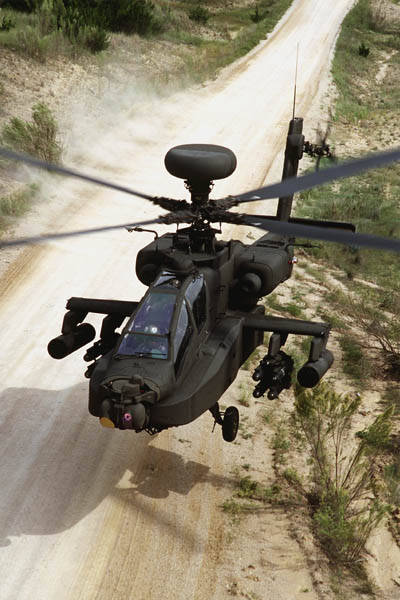
AH-64D Apache Longbow Block III
The case for "small" ...
In general, there seems to be a field for the imagination of Russian designers. The only question is whether Russia can create so many technical innovations at the same time in a short time. If so, the new car will be a technical breakthrough of the country.
Equally important is the financing of such a large-scale project: it is likely that the implementation of everything conceived without government assistance will last for many years without reaching the final stage.
According to the plans of the holding company “Helicopters of Russia” at the first stage, the company intends to independently finance the program of creating a strike helicopter - from 2011, it is planned to invest a billion dollars in the project. The rest will depend, apparently, on the Russian Ministry of Defense: if the military is interested, monetary support will come.
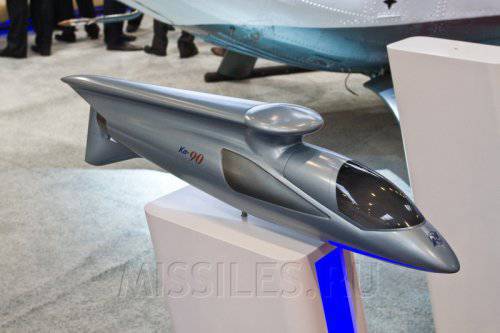
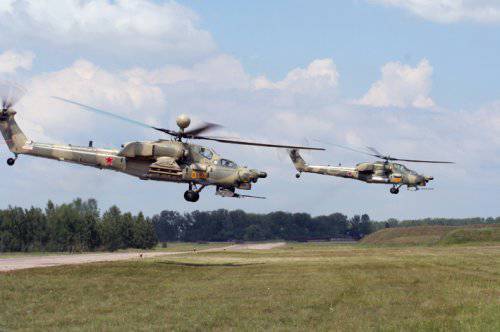
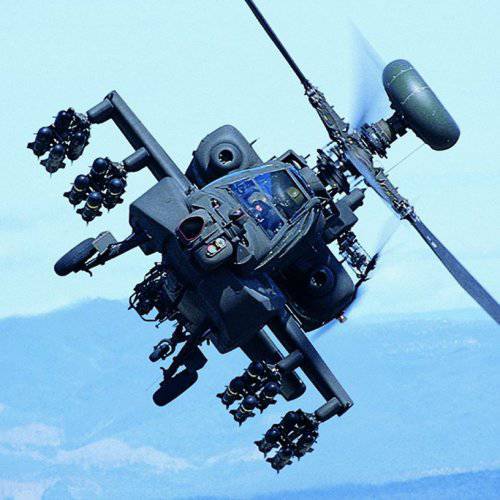
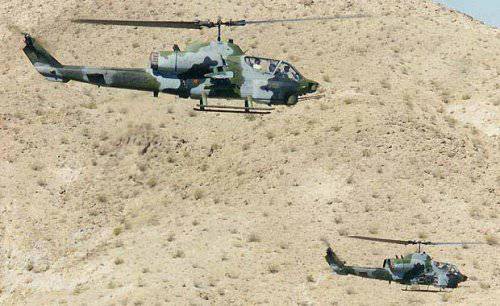
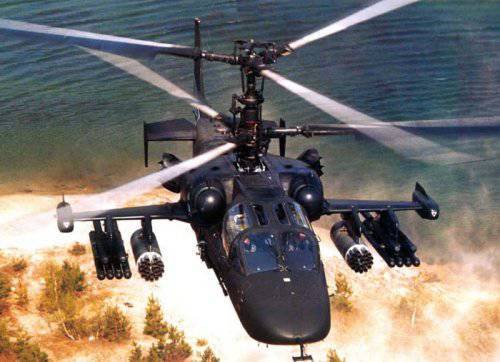
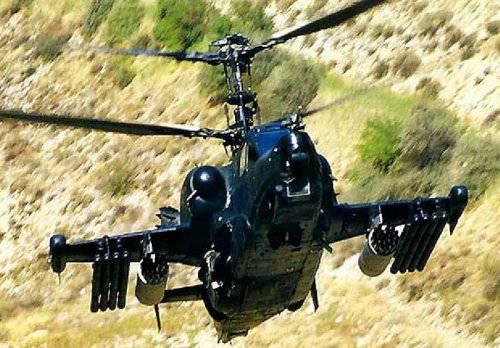
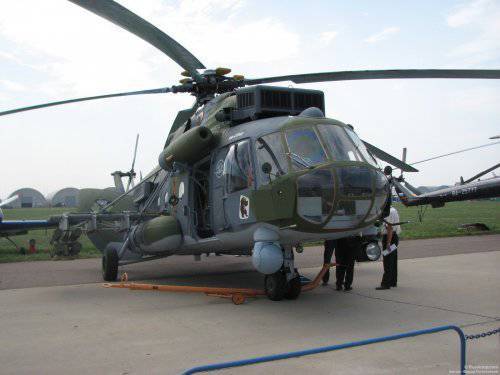
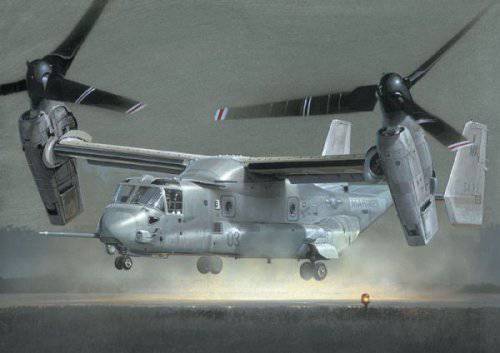
Information